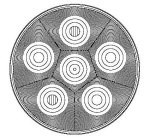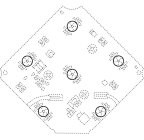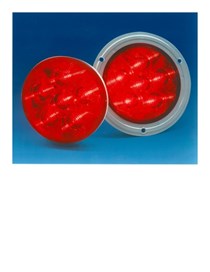COURT’S FINDING OF NONINFRINGEMENT NOT BINDING ON TRADEMARK BOARD
Despite a court ruling that MOAB as a trademark for passenger automobiles and automotive parts does not infringe MOAB INDUSTRIES for installing specialty automotive equipment, the U.S. Trademark Trial and Appeal Board (TTAB) affirmed a refusal to register MOAB on the ground of likelihood of confusion with MOAB INDUSTRIES. In re FCA US, LLC, Serial No. 85650654 (April 10, 2018) [precedential]. The TTAB said that because the issues and records presented to the court were different from those before the TTAB and because the U.S. Patent and Trademark Office (USPTO) was not a party to the court case, the TTAB was not required to apply the issue-preclusion doctrine that the U.S. Supreme Court set forth in B & B Hardware, Inc. v. Hargis Industries, Inc., ___ U.S. ___, 135 S. Ct. 1293 (2015).
After FCA US, LLC (FCA) applied in 2012 to register MOAB, a USPTO Examining Attorney preliminarily denied the application in light of the registration for MOAB INDUSTRIES. Later that year, while the application was still under examination, the registration’s owner, Moab Industries, LLC (“MI”), filed a trademark suit against FCA in the U.S. District Court for the District of Arizona. Moab Indus., LLC v. FCA US, LLC, No. CV-12-08247PCT-HRH. The following year FCA filed a petition, No. 92057939, asking the TTAB to cancel the registration.
The USPTO suspended action on FCA’s application pending the outcome of the litigation, and the court dismissed MI’s claims in October 2016. Moab Indus., 2016 WL 5859700. Upon the stipulation of the parties, in December 2016 the TTAB dismissed the cancellation proceeding without prejudice. The USPTO Examining Attorney then resumed examination of the MOAB application and issued a final refusal to register the mark. FCA appealed to the TTAB, arguing that because the court had found MI failed to prove that FCA’s use of MOAB in connection with its JEEP WRANGLER MOAB Special Edition was likely to cause confusion with MOAB INDUSTRIES, the TTAB was bound to overrule the Examining Attorney’s refusal to register MOAB.
The TTAB disagreed, noting that “[a]lthough there is some overlap between Applicant’s defense and counterclaims in the federal court action and the basis of refusal of Applicant’s application, they also raise discrete issues. In other words, the issues are not identical.” The TTAB acknowledged that in the court case “[FCA], in the position of defendant, sought—and obtained—a finding that specific alleged marketplace activities did not infringe [MI’s] rights in the mark MOAB INDUSTRIES.” However, the TTAB added, FCA “also sought—but did not obtain—cancellation of the Registration and a more general declaration of noninfringement.”
With regard to what FCA characterized as “the more fulsome record” before the court, the TTAB said that “[i]n the registration context, likelihood of confusion is determined by the marks, the goods and services, and the usages disclosed in the application and the cited registration.” Thus, the TTAB held, the evidence in the court record “that seeks to limit or alter the usages encompassed by the marks, goods and services, or usages listed in the application and registration are not considered in assessing likelihood-of-confusion in the registration context.” Finally, the TTAB noted, “[t]he Federal Circuit has long held that a determination in district court litigation does not bind the USPTO in a later ex parte proceeding” such as examination of FCA’s application (citing In re Trans Texas Holdings Corp., 498 F.3d 1290 (Fed. Cir. 2007)).
After explaining why it was not bound by the court decision, the TTAB analyzed the likelihood-of-confusion issue under the well-known factors set forth in In re E.I. DuPont DeNemours & Co., 476 F.2d 1357 (CCPA 1973), noting that it had also considered the factors from AMF Inc. v. Sleekcraft Boats, 599 F.2d 341 (9th Cir. 1979), that the court had used in its own analysis. Applying those factors, the TTAB noted that “[t]he marks are similar” and “[t]he goods (in particular, automotive structural parts) and services are related and are of types that customers would expect to emanate from a single source.”
Upon balancing all of the relevant factors, the TTAB said, FCA’s “mark, as intended to be used on the identified goods, so resembles [MI’s] registered mark, as used in connection with [MI’s] identified services, as to be likely to cause confusion.” Accordingly, the TTAB upheld the refusal to register FCA’s MOAB mark.
TRADEMARK BOARD TURNS OFF TRUCK-LIGHT MARKS
In a consolidated opposition and cancellation proceeding, the U.S. Trademark Trial and Appeal Board (TTAB) found that a pattern for truck lights was not functional but lacked the acquired distinctiveness required to entitle it to registration as a trademark. Grote Industries, Inc. v. Truck-Lite Co., LLC, Opposition No. 91196923 and Cancellation No. 92053498 (March 30, 2018) [precedential].
Grote Industries, Inc. (Grote) petitioned to cancel the registration of Truck-Lite Co., LLC (TL) for the following configuration for “lighting products for vehicles, namely, a combined stop-turn-tail lamp” in International Class 11:

In addition, Grote opposed registration of the following configuration for “electric lighting fixtures, namely, lights for vehicles” in International Class 11:

The TTAB held that the essence of the claimed marks as depicted in the foregoing drawings comprises the same “Penta Star Pattern” design shown in the specimen of use for both TL’s registration and its application:

First, the TTAB considered whether TL’s Penta Star Pattern is incapable of serving as a trademark. Section 2(e)(5) of the Trademark Action, 15 U.S.C. § 1052(e)(5), prohibits registration of “any matter that, as a whole, is functional.” The TTAB noted that according to the leading case TrafFix Devices Inc. v. Marketing Displays Inc., 532 U.S. 23 (2001), a product design or feature is generally considered to be functional if it is essential to the use or purpose of the article or if it affects the cost or quality of the article. A functional feature is one the exclusive use of which would put competitors at a significant non-reputation-related disadvantage. Id. at 32 (other citations omitted).
The TTAB analyzed the functionality issue under the factors set forth In re Morton-Norwich Products, Inc., 671 F.2d 1332 (CCPA 1982): (1) the existence of a utility patent disclosing the utilitarian advantages of the design; (2) advertising materials in which the originator of the design touts the design’s utilitarian advantages; (3) the availability to competitors of functionally equivalent designs; and (4) facts indicating that the design results in a comparatively simple or cheap method of manufacturing the product. Applying those factors, the TTAB found that although TL did have a relevant utility patent for an invention including light-emitting diodes, the patent did not show the Penta Star Pattern as being “essential to the use of purpose of the [patented] article.”
Next, the TTAB found that TL’s advertising did not promote utilitarian advantages arising from the Penta Star Pattern. With regard to the issue of whether functionally equivalent designs are available to competitors, the TTAB held that because the evidence of record was mixed, this factor was neutral. Finally, the TTAB found that the Penta Star Pattern offered “no clear benefit as to either cost or ease of manufacture attributable to the pattern.” Thus, the TTAB said, TL’s marks are non-functional.
Because Grote also asserted that the Penta Star Pattern was aesthetically functional, the TTAB considered the issue of whether TL’s marks were prohibited from registration under Section 2(e)(5) because of “a ‘competitive need’ for the feature” (citations omitted). The TTAB found that Grote had not established a competitive need for use of the Penta Star Pattern and also had not proven that the pattern served an aesthetic purpose independent of any source-identifying function.
Having found that TL’s marks were not functional, the TTAB then considered whether the marks, as a product design that was therefore not inherently distinctive, had acquired distinctiveness and thereby become registerable. TL’s evidence on this issue consisted largely of advertising and sales figures. The TTAB noted that “sales success alone is not probative of purchaser recognition of a configuration as an indication of source, because, without more, it may simply indicate popularity of the product itself rather than recognition of a mark” (citations omitted).
The TTAB found that “the record, viewed in its entirety, contain[ed] insufficient probative evidence that the primary significance of [TL’s] design at the time of trial is to identify the source of its lights in the minds of consumers.” Thus, the TTAB held “there is insufficient evidence in the record as a whole to show that the design by itself indicates source, or that consumers recognize it as such.” For that reason the TTAB granted Grote’s petition to cancel TL’s registration and sustained Grote’s opposition to TL’s application. Having reached a judgment on those issues, the TTAB said that it did not need to address Grote’s allegation that TL had committed fraud on the U.S. Patent and Trademark Office by making factual misrepresentations in the record for its registered mark.
